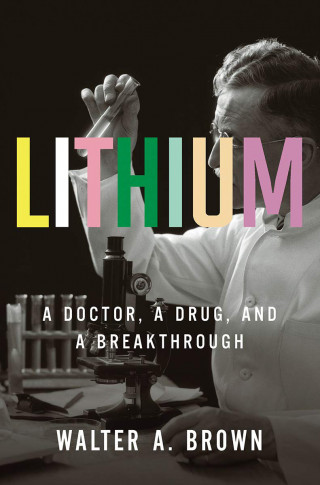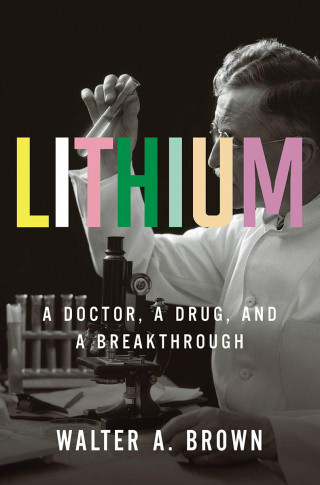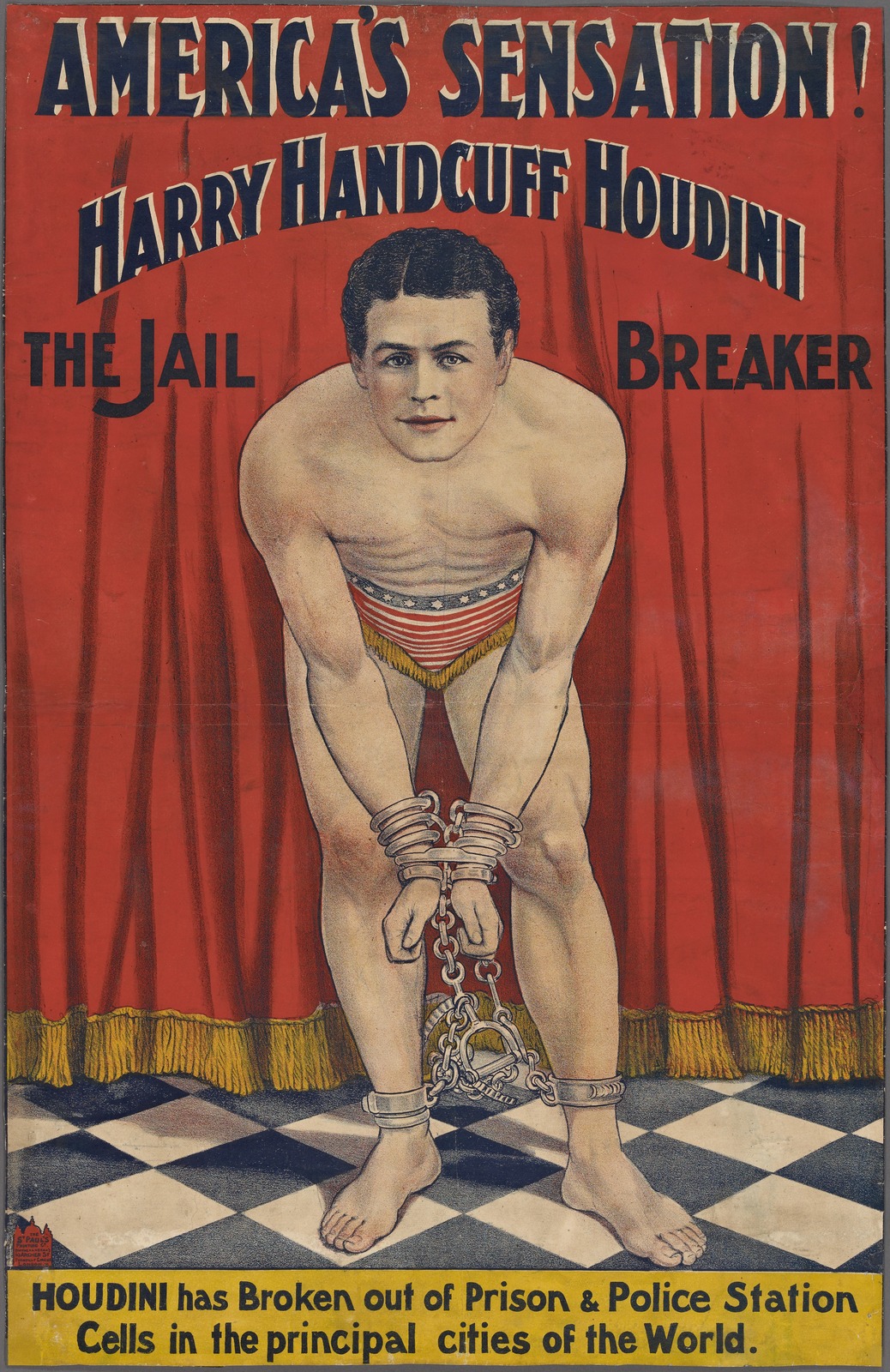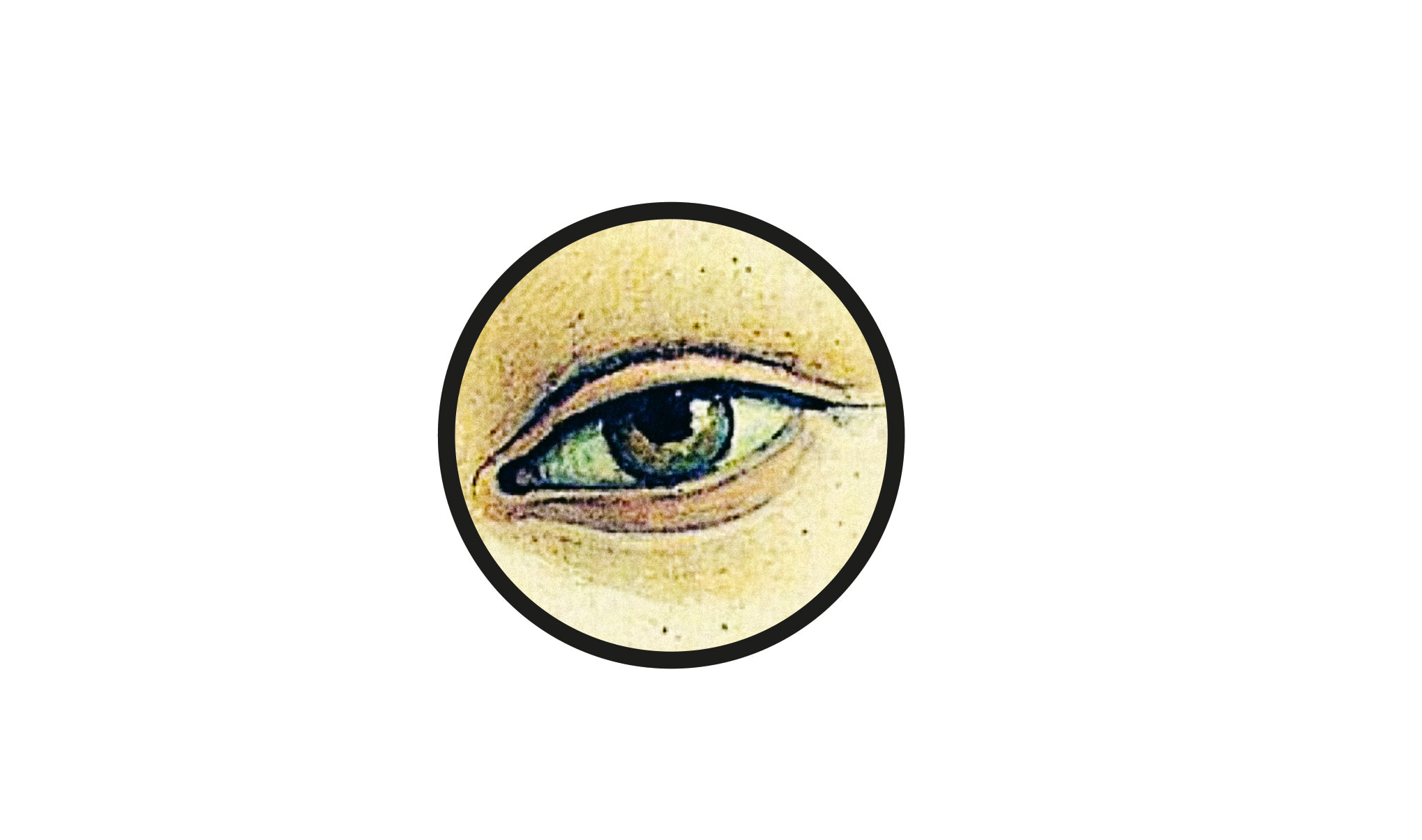
A brief biography of lithium – how a drug discovered by accident helped to soothe the unstable, revolutionized psychiatry, and yet has remained a worldly resource that will never make anyone rich.
The medical writing of recent years is a feast of literary talent, showing healing as part of social history and our pursuit of immortality. A recently published book by Walter A. Brown, a psychiatrist and academic from Rhode Island, has earned its place on the shelves alongside the world league of the genre, such as Atul Gawande, Siddhartha Mukherjee, Henry Marsh and Jürgen Thorwald. Brown’s Lithium: A Doctor, a Drug, and a Breakthrough is the story of an inconspicuous medicine whose beneficial and not fully explainable effect on patients suffering from bipolar disorder changed the last 50 years of psychiatry. However, it is still unknown why lithium salts suppress dangerous manic episodes so effectively and quickly, or how they save patients from relapses into alternating states of deep depression and acute agitation. Just as it is still unknown what actually causes this disease. Along with schizophrenia, bipolar disorder is considered to be one of the most serious psychiatric disorders. 2% of the population suffers from it – or one in ten, if you count all its variants.
Brown’s story takes the form of a fascinating, unusual biography of a medical discovery and its discoverer. In general, new drugs – if they pass the testing stage – are promoted by pharmaceutical companies and offered to patients according to the rule ‘let’s use them as long as they work’, because they will soon be replaced by something else. In contrast, lithium salts were ignored and considered poisonous for two decades after the discovery of their effects. However, when they were finally appreciated, they completely changed the treatment of mental disorders and remain to this day the gold standard in the treatment of alternating mania and depression.
Lithium is an element that, like helium and hydrogen, has been with us since the Big Bang 14 billion years ago. In nature, it occurs in rocks and water, usually in the form of salts. It cannot be patented or sold for great profit. And in that sense, it was unlucky: no company wanted to promote it. The second bit of bad luck resulted from the fact that its effects were discovered after World War II by John Cade, an unknown Australian psychiatrist and scientific experimenter who didn’t publish in key journals and didn’t conduct his research according to the recognized standards. He made his ground-breaking discovery in a small lab in the back rooms of a provincial hospital. He was a veteran of the Boer Wars, and after graduating from medical school, he had looked after European officers at the infamous prison in Chiangi, established by the Japanese after the invasion of Singapore. He returned home in 1946, starved, with symptoms of post-traumatic stress disorder, and became the director of a small psychiatric hospital in the suburbs of Melbourne.
His observations from Chiangi, where malnutrition and stress had affected the soldiers’ mental state, led him to believe that the disorders were of biological origin. He suspected they were caused by the overproduction of a particular substance. As a natural observer, convinced that every doctor should conduct their own research, he began his search. He tested toxins in the urine of patients and then injected them into the peritoneum of laboratory guinea pigs. His methods were simple and strict, and he conducted his research in an unused hospital pantry.
There, he discovered that toxins from the urine of people suffering from bipolar disorder killed the guinea pigs faster, and he began a series of amazing, somewhat chaotic trials, the descriptions of which the author of the book, Walter A. Brown, studied more than a hundred times. We don’t know why Cade decided to check whether uric acid was particularly toxic. He was of an inquisitive nature; there were many times during his life when he simply gave things a shot. And finally, bingo – isolated lithium carbonate reduced urine toxicity and protected the guinea pigs from death. Next, Cade tested whether lithium carbonate alone had any effect on the guinea pigs. It did. It calmed them down and made them lethargic. The Australian psychiatrist then tested whether it calmed manic patients as well.
The first person on whom he tested the effects of lithium salts was himself; he began taking them in February 1948. A month later, not having noticed any side effects, he started to give them to patients with symptoms of mania. The first man, who had been suffering from manic and depressive episodes for 30 years, became calm on the fifth day of taking lithium. In 1949, Cade published the preliminary results of the research in which he proved the beneficial effects of lithium on previously uncontrollable and devastating mania.
The notes he left don’t reveal how he worked out the right doses (which, with minor changes, are still used to this day). Over time, however, the toxic aspect of the drug was revealed. Some patients had symptoms of poisoning, kidney damage and cardiac disorders. There were also fatalities. This prompted Cade to abandon his research; instead, he began searching for the causes of schizophrenia. He considered his brilliant discovery too dangerous.
It took another two decades, and the involvement of European psychiatrists who came across Cade’s publications, to determine that lithium salt intake is harmless to humans provided the concentration of the element in the blood is controlled. There is a small difference between the therapeutic and toxic dose, but monitoring is sufficient.
The second key researcher in the history of lithium was Mogens Schou (1918–2005) from Denmark, who, despite the environment of scepticism, conducted tests which proved that lithium not only soothes mania, but also does something more valuable: it stops the recurrence of subsequent extreme states. It enables patients to have a normal life, relationships and work, saving them from suicide and hospitalization. It was only after 1970, and Schou’s publication of the ground-breaking results of his double-blind trial, that it became clear to all psychiatrists in Europe and the US that lithium was the right answer for manic and depressive cycles.
Lithium is a strange case – it is surprisingly precise and effective in suppressing manic agitation, in which patients suffer from logorrhoea and motor agitation, feel that they have the world at their feet and can do anything, create intensively (like bipolar disorder sufferers Virginia Woolf, Kurt Cobain and Winston Churchill), spend money, crave sex, alcohol and thrills, and feel that they have no need for sleep or food, to the point that they become aggressive and impossible to restrain. Unlike other drugs, such as sedatives, anxiolytics and hypnotics, lithium acts on only one condition. However, it is lithium that paved the way for all psychiatric pharmacology – it showed that patients needed chemical substances. It acted like an icebreaker and was soon followed by a flood of medicines to help with various disorders.
One of the most important effects of taking lithium is the decrease in the number of suicides, which is up to 20 times higher in people with bipolar disorder (at 6%) than in the general population. This is because the depression that follows the mania is deeper and often longer than for endogenous depression, such as that caused by stress. For the ups and the sense of omnipotence, sufferers pay the price of darkness and hopelessness. Alleviation of the mood fluctuations works in one third of patients. Lithium is therefore not a miracle drug, but a highly effective one. Over half a century, it has brought the US economy a few billion dollars in savings. It is much harder to count the talents saved – bipolar disorder affects many artists, scientists and other extremely creative people.
This is not the end of the story. We are now seeing the effect that lithium exerts on neurons, nourishing and protecting them, and stimulating growth. There is a chance that it could play another important role – stopping dementia. Provided that an inquisitive researcher will once again become its ally. In Australia, John Cade, who died in 1980, remains a hero of psychiatry and a patron of prestigious scholarships and medical awards. Now, thanks to Brown’s erudite book that delves into history and genetics, we too can discover the surprising paths of his unruly mind.

Translated from the Polish by Kate Webster









